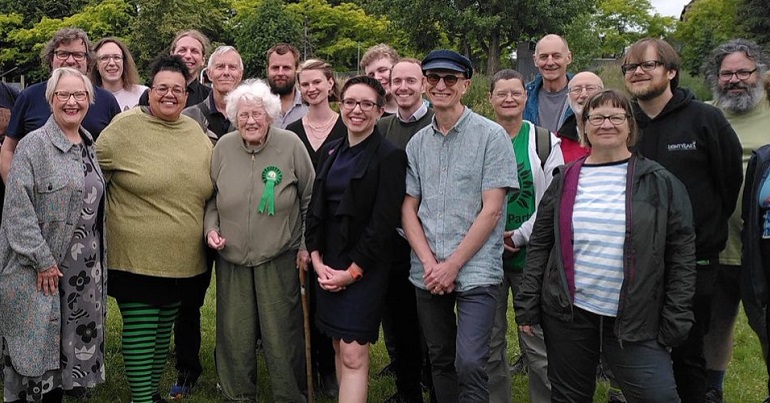“Let All Indignados in all the squares join together”: Beginning From the Beginning
The Occupation of Wall Street is entering into it’s third week and things are heating up. The large Transport Workers Union has pledged it’s support, echoing the much-vaunted ‘Teamsters and Turtles’ (Unions and environmentalists) alliance that helped make Seattle so legendary. Similar movements are spreading around the country (see here and here). The first official statement from the occupation has been released, stating amongst other things:
“…no true democracy is attainable when the process is determined by economic power. We come to you at a time when corporations, which place profit over people, self-interest over justice, and oppression over equality, run our governments.”
These are fascinating times, particularly given the seeming inability of government’s to deal with the ongoing economic turmoil (this video has also been causing quite a stir). I wanted to talk a bit about the parallels between Wall Street and the movements often cited as inspiration, most notably Syntagma Square in Athens, the ‘Indignados’ movement in Spain and, of course, Tahrir Square and analyse some of the political developments we’re seeing. Naturally, due to the sketchy and incomplete information that’s reported these observations are often based on fragments
Geographical spaces have been central in the movements mentioned above. As the Global Research Institute report, city square occupations have taken place throughout Spain and sprung up in Athens, Paris and Lisbon. The history of popular assemblies in fermenting revolution and revolt is an interesting one, as argued in an interesting article on People’s Assemblies here. While the occupation in Albert Square in Manchester isn’t looking too healthy right now (and is now apparently relocating to Peace Gardens) plans are afoot for occupations in Liverpool and London.
In Spain, the movement began with the massive occupation of Puerto del Sol and subsequently resulted in the creation of more than 150 regional assemblies for discussion and action. In Greece, the occupation of Syntagma Square was, as far as I understand it, a response to the 15 May movement in Spain. Of course, Greece has had an incredibly active, radical movement for years (a recent example of the popular militancy can be seen in the occupation to prevent a meeting between debt inspectors and the government.) I don’t want to use up space with an exhaustive discussion of Greece, but suffice to say that the movement is broad, tactically diverse and the situation is absolutely worthy of your attention.
Then there is Tahrir, an occupation which is in the process of regenerating. The occupation of Tahrir is interesting because, as Rashed and Azzazi write in their account as participants, it allowed the space for the consolidation of diffuse demands into a simple demand for Mubarak to go.[1] Reflecting on the experience, they describe the emergence of a singular will, writing:
“In the impromptu temporary society formed in Tahrir Square, the power of the group emerged from the union of hundreds of thousands of egos in a collective cry against tyranny.”
The movement in Wall Street, while attracting a lot of attention, is of course far smaller than the movements described above. What’s interesting is the attempt a short circuit between the development of a movement and the final outcome. This can happen because the global context provides an immediate framework for understanding what’s taking place.
So what are the similarities and differences? Certainly, using the space to consolidate and imagine demands is the most obvious and inspiring. We’ve yet to see concrete examples of action emerge from the occupation, but this may well change as time passes, especially now that unions are getting involved. The emergence of a singular consciousness (for those present and relating to it) is also something that will be interesting to monitor. For example, will the police repression backfire and create more militancy now that participants are less isolated, as it has elsewhere? Certainly, there is some suggestion that this is already happening.
While some people have critiqued the seemingly a-political nature of the occupations so far (with differing levels of good intent) there is something misleading about this approach. I think it’s better to see these movements as an example of ‘beginning from the beginning’. By uniting people, in public, to discuss and debate what needs to happen the possibility emerges of moving on from the long-term deadlock of the left.
As Alain Badiou argues, history has been dogged with what he calls ‘the communist idea’. Basically, this is the ‘idea’ that the domination of wealth and class can be overcome and production organized on a non-hierarchical basis. In the 19th century, this was a ghost searching for form, immortalized by Marx as a ‘spectre haunting Europe’. In the 20th century, after 1917, it became entwined with Leninism and the notion of hierarchical parties following ‘iron discipline’ from the top. Naturally, this was a dark period for the left. Having left this behind, says Badiou, it is our duty to bring about the ‘third age’ of the idea in a new form, although how it will emerge is as yet unknown.[2]
This basic idea that the hierarchical control of society via wealth can be overcome is central to these movements. You can see it in the statement from wall street and the joint statement from Syntagma Square and Peurto del Sol here.
While the name of this ‘idea’ isn’t important (although I would argue the theoretical tradition certainly is) the possibility that these movements fit into a historical tradition and, moreover, we can finally begin to move away from the fatalism of the late twentieth century and imagine new directions for emancipatory, popular struggle, is crucial. There are other important threads. Echoing Ranciere, these movements emphasize equality as a starting point, rather than something to be achieved later. The occupations also prioritize the importance of radical process – developing solutions and autonomous power – rather than simply appealing to morality in the hope of finding a sympathetic ear somewhere further up the hierarchy.
I’m enthusiastic about this movement spreading to the UK, as we certainly need something new. After 10 years of unsuccessfully agitation, and it’s exciting to imagine what a vibrant occupation movement taking place at the same time as Britain’s largest strike since 1926.
Moving forward: “Let all indignados in all squares join together.”
Joseph Ritchie blogs at http://ascannerdespairingly.wordpress.com/ where a longer version of this article can be found.
1. Rashed, M. A. and El Azzazi, I. (2011), The Egyptian revolution: A participant’s account from Tahrir Square, January and February 2011
2. Badiou, Alain The Idea of Communism in The Idea of Communism (ed. Zizek and Douzinas) (2010) Verso pp. 1-14




Very nice write-up. I certainly love this website.
Keep writing!